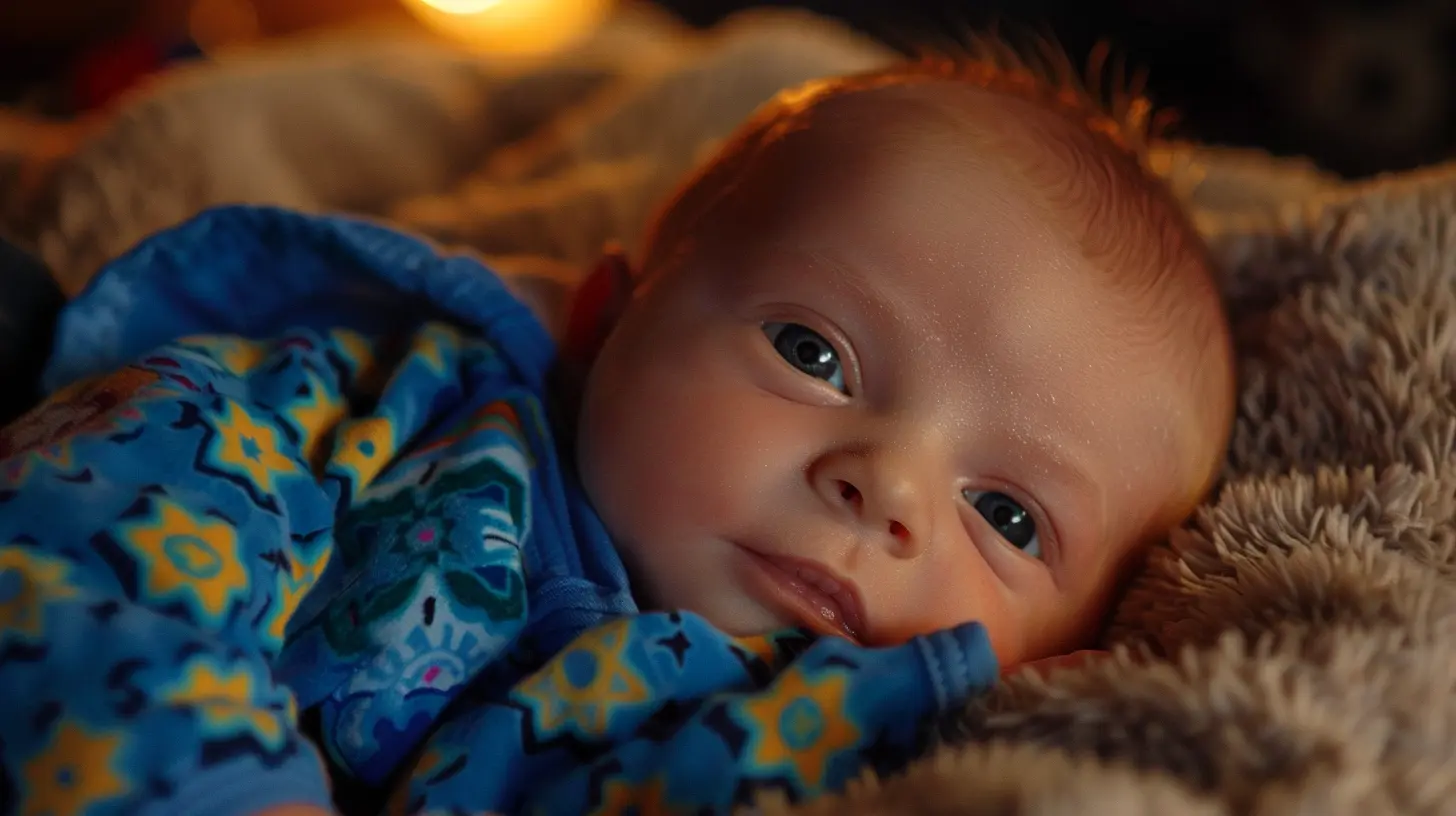The Science Behind Baby Sleep Patterns and How to Optimize Them
9 August 2025
If you’re reading this with one eye open and a baby bottle in your hand—welcome, friend. You’re not alone. Baby sleep can feel like a mystery wrapped in a riddle, topped with a sprinkle of sleep deprivation. But here’s the good news: there’s science behind those unpredictable baby sleep patterns, and better yet, things you can do to help your little one (and you!) get more restful nights.
Let’s dive deep into what’s actually going on in your baby’s tiny brain while they snooze—and how you can support healthier, more predictable sleep. Spoiler: it doesn’t involve any magical wands, but it might just save your sanity.
Understanding Baby Sleep: What Makes It So Different?
Before we talk about fixing bedtime fuss, we need to understand why babies sleep the way they do. And honestly? It’s because they’re brand new to this whole “being alive” thing.1. Sleep Cycles: Baby vs. Adult
Let’s start with the basics—sleep cycles. Adults go through about five sleep stages in 90-minute cycles. We spend a lot of time in deep sleep, which makes us feel refreshed in the morning.Babies? Not so much.
Newborns have shorter sleep cycles—around 40 to 50 minutes. They also spend about half of that time in REM (Rapid Eye Movement) sleep.
Why does this matter? Well, REM sleep is lighter and easier to wake from. That’s one reason why your baby might wake up just as you ninja-rolled out of the nursery.
2. Circadian Rhythms: Not Fully Baked Yet
Here’s a fun fact (or maybe not-so-fun if you’re in the thick of nighttime wakeups): newborns don’t have a fully developed circadian rhythm. That’s the internal clock that tells us when it’s time to sleep and wake up.These rhythms don’t really kick in until around 2 to 4 months of age, and even then, they need environmental cues (like light and dark) to stay on track.
3. Hunger Trumps Everything
Babies have teeny-tiny tummies—especially in those early weeks. So, they need to feed often, including in the middle of the night. For breastfed newborns, waking every 2 to 3 hours is totally normal. And yes, it sucks... but it’s biology, not bad behavior.
The Different Stages of Baby Sleep
Baby sleep isn’t just one long nap. It’s made of several stages that evolve as they grow.Newborns (0–2 Months)
At this stage, sleep is all over the place. Babies sleep around 14–17 hours a day, but not in long stretches. They can’t tell day from night, and sleep is primarily driven by feeding.You might notice:
- Short sleep cycles
- Startle reflex (Moro reflex) waking them up
- Lots of REM sleep
Infants (3–6 Months)
Now we’re getting somewhere! Around this age:- Sleep starts to consolidate
- Circadian rhythms begin developing
- Babies may sleep longer at night (hallelujah!)
Naps still happen frequently, and your baby might still wake to feed, especially if they’re going through a growth spurt.
Older Babies (6–12 Months)
Here’s where things can get smoother—or hit a few bumps.By now, many babies can sleep longer stretches at night (some even 6–8 hours), and naps become more predictable. However, you might also run into:
- Sleep regressions (oh yes, they’re real)
- Separation anxiety
- Teething-related wakeups
Common Baby Sleep Challenges (and How to Handle Them)
Let’s be real—there’s no one-size-fits-all when it comes to baby sleep. But knowing the WHY behind the wakeups can help you troubleshoot without losing your mind.1. Sleep Regression
You just hit a sweet spot with sleep and BAM! Your baby is up every two hours again.That’s a sleep regression.
These usually hit around:
- 4 months
- 8–10 months
- 12 months
Why? It’s often tied to developmental milestones. Your baby’s brain is growing like crazy—learning to roll, sit, crawl, maybe even walk. This affects sleep big time.
What to do: Stay consistent with your routine and offer comfort. It’s usually temporary.
2. Overtiredness
You’d think a tired baby would sleep better, right? Not quite.When babies get overtired, their bodies produce more cortisol (the stress hormone), making it harder to fall asleep and stay asleep. It’s basically baby FOMO mixed with an adrenaline rush.
What to do: Watch for sleep cues (like rubbing eyes, zoning out, yawning), and try to put your baby down before they pass the point of no return.
3. Short Naps
So, your baby slept for 27 minutes... again.Short naps are common, especially in young infants who haven’t yet developed consolidated sleep cycles. Sleep associations (like needing to be rocked or fed) can also play a role.
What to do: Try to keep nap routines consistent. Encourage longer naps by helping them connect sleep cycles. This might mean going in at the 30-minute mark to soothe them back to sleep.
How to Optimize Baby Sleep (Yes, It’s Possible!)
If you’re looking to nudge your baby toward better sleep without full-on sleep training, there are gentle and effective ways to help your baby thrive.1. Establish a Bedtime Routine
This might sound cliché, but routines work. Babies thrive on predictability. A simple 20–30-minute routine signals that it’s time to wind down.Your routine could include:
- Bath time
- Changing into PJs
- Dim lights
- Reading a short book
- Feeding
- Soft lullabies
Use the same order each night. Over time, your baby will recognize the pattern and start to feel sleepy automatically.
2. Create the Ideal Sleep Environment
Set the stage for sleep. Think of it as designing a cozy, calm sleep cave.Tips:
- Keep the room cool but comfortable (68–72°F)
- Use blackout curtains to block light
- Add white noise to drown out household chaos
- Use a firm, safe crib mattress with no loose bedding
This isn’t just about comfort—it also helps reinforce that nighttime is for sleep.
3. Understand Wake Windows
Wake windows are the periods your baby can comfortably stay awake between sleeps. They vary by age, and following them can help prevent overtiredness.Here’s a quick guide:
- 0–3 months: 45–90 minutes
- 4–6 months: 1.5–2.5 hours
- 6–9 months: 2–3 hours
- 9–12 months: 2.5–4 hours
Use these as a guide—not gospel—and tweak based on your baby’s cues.
4. Encourage Day-Night Differentiation
During the first few weeks, help your baby get on track with day vs. night.During the day:
- Keep lights bright
- Play and interact
- Limit long daytime naps (yep, it’s okay to wake them sometimes)
At night:
- Keep lights dim
- Speak in soft voices
- Handle feeds quietly
- Limit stimulation
This helps reinforce circadian rhythm development.
5. Watch Sleep Associations
Sleep associations are the things your baby needs to fall asleep—feeding, rocking, pacifiers, etc. These aren’t “bad,” but if your baby depends on you each time, they may struggle to self-soothe when they wake up at night.Gentle ways to help reduce sleep dependencies:
- Try putting baby down drowsy, not fully asleep
- Use a consistent comfort item (like a soft lovey, if age-appropriate)
- Gradually reduce how much help you give over time
Should You Sleep Train?
Ah, the million-dollar question.Sleep training is totally optional and deeply personal. There’s no one “right” way. Some parents swear by it. Others prefer to wait for their baby to sleep through the night naturally.
If you’re considering it, do your homework. There are many methods—from Ferber to no-cry—each with pros and cons.
The key takeaway? You’re not failing if your baby doesn’t sleep 12 hours straight.
Final Thoughts: Give Yourself Grace
Here’s something every tired parent needs to hear: your baby’s sleep isn’t a reflection of how good a parent you are.It’s easy to compare your situation to that Instagram mom whose baby “slept through the night at 6 weeks.” But here’s something to remember—every baby is different.
Understanding the science behind baby sleep gives you a foundation. Making small changes can bring big improvements. And guess what? This stage won’t last forever, even if it feels like it.
So grab that coffee, take a deep breath, and know that you’re doing an amazing job—even on three hours of sleep.
all images in this post were generated using AI tools
Category:
Baby SleepAuthor:

Maya Underwood
Discussion
rate this article
1 comments
Leslie McPhee
Thank you for this insightful article! Understanding the science behind baby sleep patterns is essential for new parents. Your tips on optimization are practical and will surely help improve our little ones' sleep.
August 23, 2025 at 2:57 AM

Maya Underwood
Thank you for your kind words! I'm glad you found the article helpful for optimizing baby sleep. Wishing you and your little one sweet dreams!


